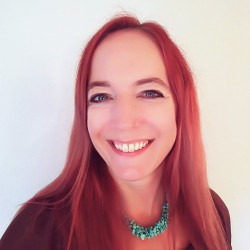If you happen to see College of Western Idaho’s (CWI) librarians wearing designer gowns and tuxedos to work, don’t be surprised. CWI Library was recently awarded an Excellence in Academic Libraries Award, which is the academic library equivalent of winning an Academy Award. The award is given by the Association of College and Research Libraries (ACRL) to honor an outstanding community college, college, and university library each year. According to ACRL, the award recognizes “the accomplishments of librarians and other library staff as they come together as members of a team to support the mission of their institution.”
Moments like this cause us to reflect on how far we’ve come, and those of us who have been at CWI for a while know how much fun that can be. So I thought I’d give you a quick recap of what CWI Library looked like when I began as director in 2011:
- Our library resided in a single classroom in the NCAB building, where our few bookshelves were notably devoid of actual books (we had about 2,000 total at that point).
- Those searching for books in our catalog typically received a blank page that noted only that there were no results for that search (suuuper encouraging).
- Aspiring researchers visiting our website found a single page that redirected them to our accreditation partner, the College of Southern Idaho, for the majority of their needs (advancing the message: Welcome to CWI Library! Now go away).
- For the few databases we offered, we had a handout listing the passwords you needed to log into them. (You had to call or stop by to get access).
- Oh, and the Library staff consisted of two people. I was one.
While the two of us poured our energy into serving students, things at CWI Library were pretty dire back then. The most common thing we heard from students as they walked into our space was, “Oh. My high school library was bigger than this.” Faculty sent their students straight to Boise State to work on class assignments, and our established local library colleagues looked askance at the valley’s latest startup, wondering how long they would be the ones who had to support our students. A fair question.
Then, there was the first accreditation site visit by the Northwest Commission on Colleges and Universities (NWCCU), which took place in week six of my new job as director. Although I did my enthusiastic best to convey my vision and plans for our library, there was no getting around the fact that none of my grand ideas were actually in play yet. When the accreditation team listed the library among the five areas they recommended for improvement at the college – and after I spent about 24 hours believing myself to be an absolute failure whose promising career had just crumbled to dust – the challenge was on. The mandate I received from the vice president to whom I reported at the time was essentially: Kim, make us a library.
We grew everything year by year: our staff, our systems, our spaces, our collections, our knowledge, and our reputation on campus. We invented our jobs and our processes day by day because there was no precedent to fall back on and no expert to consult. We were all new to our roles and were all in these roles for the first time. We built an organizational culture that prioritized flexibility, experimentation, and innovation, because for us there was no other way to get things done.
Many staff and faculty at CWI have similar stories. Working at our college in the early days was equal parts challenging, exhausting, and inspiring beyond words. For the library staff, these years have been an incredible experiment in inventing a community college library according entirely to our ideals and the needs we heard from our students and faculty.
It worked. First we saw our accreditors entirely reverse their opinion of the library, offering us a commendation at the next site visit in 2017. Now, as we display our new plaque in the exhibit case outside the Nampa Campus Library, we accrue evidence that even with our small staff and minimalist spaces, CWI Library has grown into a top-caliber academic library, serving the campus with services, resources, and staff that rival any of our more established peers.
It worked because we worked hard. It worked because we listened to our community of students and faculty and built the things they asked for. From my perspective as Director, it worked for another reason, too: because when you hire a team of talented, passionate, driven professionals, give them ownership of their jobs, invite them to participate in the creation of a common vision, and manage by supporting and trusting them, you end up with an award-winning organization.







